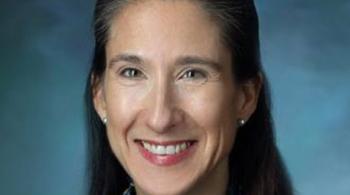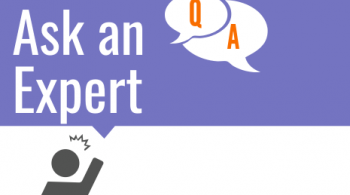By Rebecca Vaurio, Ph.D.
March 1, 2016
 Rebecca Vaurio, Ph.D., is a pediatric neuropsychologist in the Department of Neuropsychology, as well as the Center for Autism and Related Disorders (CARD) at Kennedy Krieger Institute. She is also an assistant professor of psychiatry and behavioral sciences at the Johns Hopkins University School of Medicine.
Rebecca Vaurio, Ph.D., is a pediatric neuropsychologist in the Department of Neuropsychology, as well as the Center for Autism and Related Disorders (CARD) at Kennedy Krieger Institute. She is also an assistant professor of psychiatry and behavioral sciences at the Johns Hopkins University School of Medicine.
What is ASD?
An Autism spectrum disorder (ASD) is a developmental condition that is usually first observed in childhood, though some people may not be recognized as having this condition until later in life. ASD is characterized by two main features:
- Difficulties with social communication, often characterized as being related to difficulties with social perspective taking
- A pattern of intense interests and/or repetitive behaviors
Some individuals with ASD also demonstrate differences in the way they process and react to sensory information like light, sound, or touch, either experiencing these sensations more intensely or less intensely than most people.
As the name implies, ASD represents a broad spectrum of different presentations. Some individuals have mild difficulties, while some are more significantly impaired. For example, some people may have trouble holding a longer back-and-forth conversation in social interactions, while others may be nonverbal. Some individuals may have mild difficulties reading social cues from others, while others prefer to withdraw from or avoid social interactions with most people. Some may develop a deep interest in a particular topic and spend much of their available time devoted to researching it or participating in a hobby related to their interest, while others engage in repetitive behaviors or rituals that interfere with their ability to complete important tasks in the course of their day.
What are some symptoms of ASD?
The symptoms of ASD fall in two primary categories:
- Persistent deficits in social communication and social interaction:
- Deficits in social-emotional reciprocity that range from problems initiating an interaction with someone else or keeping a back-and-forth conversation to limited or no response to others trying to interact with the individual.
- Problems with nonverbal communication behaviors ranging from difficulties coordinating and maintaining eye contact during interactions to a lack of facial expression, gesture, and other nonverbal social cues.
- Difficulties developing, maintaining, and understanding relationships with others, ranging from difficulties engaging in imaginative or cooperative play to a lack of interest in peers.
- Deficits in social-emotional reciprocity that range from problems initiating an interaction with someone else or keeping a back-and-forth conversation to limited or no response to others trying to interact with the individual.
- Restricted, repetitive patterns of behavior, interests, or activities:
- Repetitive motor movements or speech ranging from echolalia (repeating what others have said) to motor movements like hand flapping or rocking, or repetitive behaviors like lining up toys.
- Insistence on sameness, inflexible adherence to routines or ritualized patterns of verbal or nonverbal behavior which can include things such as becoming distressed by unexpected changes in routine or the environment, having difficulty transitioning from one activity to another, or insisting on following the same ritualized routine or eating the same foods, even when it might interfere with other activities.
- Highly restricted, fixated interests that are atypical in their intensity or focus. This can range from becoming preoccupied by a particular object or part of an object (e.g., being drawn to and watching fans wherever they are found), or developing a deep interest in a particular topic.
- Increased or reduced reaction to sensory input or unusual interests in sensory input. This might include discomfort with certain sensory input like loud noises or particular textures in food or clothing, or might include unusual sensory interests, like smelling objects or repeatedly touching something pleasing, even when it might not be appropriate (e.g., touching someone else's hair).
- Repetitive motor movements or speech ranging from echolalia (repeating what others have said) to motor movements like hand flapping or rocking, or repetitive behaviors like lining up toys.
These behaviors are expected to be present from very early on in development, but may not be obvious until a child enters school, or later, when social demands are higher (APA, 2013). It is also important to note that these behaviors may look very different over the course of development as individuals grow older, encounter new challenges and demands, and develop new skills and abilities.
Who has ASD?
The most recent estimates in the United States suggest that 1 in 68 children have been identified as having ASD (CDC, "Autism Spectrum Disorder"). This represents a significant change from previous estimates and has led to some concern that ASD is becoming more common. However, most research at this time suggests the increase is related in large part to changes in the diagnostic criteria that have evolved over time to recognize individuals with milder symptoms, as well as greater awareness and training among medical providers, educators, and others to recognize and diagnose ASD more accurately. Other factors that may be contributing to an increased rate of ASD in the population cannot be entirely ruled out (Blumberg et al., 2013; Rice et al., 2010).
These diagnostic rates vary quite significantly between different regions of the country and by race, which may represent the rates at which different groups are able to access assessment and intervention services (CDC, "Autism Spectrum Disorder"). Boys are about five times more likely to be diagnosed with ASD than girls. Current studies suggest t ASD likely presents slightly differently in girls than in boys, which may explain part of the difference in rates of diagnosis (Hiller et. al, 2014).
“I have some students in my class who struggle with social skills. Do they have ASD?”
Children with ASD do have difficulty with social skills, but it is important to remember that children with other diagnoses may have trouble with social interactions as well. For example, children with ADHD may miss social cues from their peers,or react impulsively, causing trouble in their social relationships. Children with social anxiety may avoid social interactions. Children with language delays may have trouble communicating with their peers, and children with intellectual disabilities may have social difficulties because their social skills simply have not developed as quickly as their typically-developing peers. An evaluation by a provider can be an important tool in better understanding what is contributing to a particular child's social difficulties. Observations from teachers, caregivers, and others who know the child well are also very important in this process.
“Do all developmental delays mean a student has ASD?”
Children with ASD often demonstrate delays in various aspects of their development, like social communication, language, or behavioral regulation; however, developmental delays are not always a result of ASD. Language disorders, motor disorders (e.g., cerebral palsy), intellectual disability, and other conditions are associated with delays in the development of various skills. If a child is showing signs of delays in development, it is important for caregivers to discuss these concerns with their providers and pursue evaluation to better understand the nature of these delays and the appropriate interventions needed to address them.
What causes ASD?
There is no single cause of autism. In recent years, research has identified that most cases of autism are caused by a combination of genetic and environmental factors that influence early brain development (AutismSpeaks.org). To date, hundreds of genes have been associated with ASD.
In some rarer cases, ASD may be associated with a particular genetic syndrome that is characterized by particular physical features and medical concerns in addition to ASD (e.g., Tuberous Sclerosis). More often, it appears that multiple genes interacting with one another may increase the chances that a particular individual will have behaviors that are characteristic of ASD (Marshall et al., 2008).
Environmental factors also appear to play a role in this. For example, the medical complications associated with premature birth appear to be associated with an increased incidence of ASD. Neurologically speaking, it appears that these genetic and environmental factors change how neurons in the brain communicate with one another through changes in their sensitivity, how they make connections to one another, and how neurons grow and develop in the brain (Ghahramani Seno et al., 2015).
What is the best school placement for students with ASD?
School placement should never be determined by a student’s diagnosis or disability code. Some students have done very well in self-contained classrooms designed for students with disabilities, while others have excelled within inclusion settings.
The key to successful school placement is to provide supports that balance meeting the needs of the student while fostering growth and independence.
References:
- American Psychiatric Association. (2013). Diagnostic and statistical manual of mental disorders: DSM-5. Washington, D.C.: American Psychiatric Association.
- Blumberg, S. J., Bramlet, M. D., Kogan, M. D., Schieve, L. A., Jones, J. R., &Lu, M. C. (2012). Changes in prevalence of parent-reported autism spectrum disorder in school-aged U.S. children: 2007 to 2011-2012. National Health Statistics Report,65,1-11.
- Hiller, R. M., Young, R. L., & Weber, N. (2014). Sex differences in autism spectrum disorder based on DSM-5 criteria: Evidence from clinician and teacher reporting. Journal of Abnormal Child Psychology, 42, 1381-1393.
- Ghahramani Seno, M. M., Hu, P., Fuad G., Gwadry, F. G., Pinto, D.,
- Christian, R. … Scherer, S. W. (2015). Gene and miRNA expression profiles in autism spectrum disorders. Brain Research,1380, 85-97.
- Marshall, C. R., Noor, A, Vincent, J. B., Lionel, A. C., Feuk, L., Skaug, J., … Scherer, S. W. (2008). Structural variation of chromosomes in autism spectrum disorders. The American Journal of Human Genetics, 82, 477–488.
- Rice, C., Nicholas, J., Baio, J., Pettygrove, S., Lee, L. C., Van Naarden Braun, K… Yeargin-Allsopp, M. (2010). Changes in autism spectrum disorder prevalence in 4 areas of the United States. Disability Health Journal, 3(3), 186-201.
- Information from the Autism Center of Excellence, UC San Diego: https://autism-center.ucsd.edu/autism-information/Pages/what-is-autism.aspx















